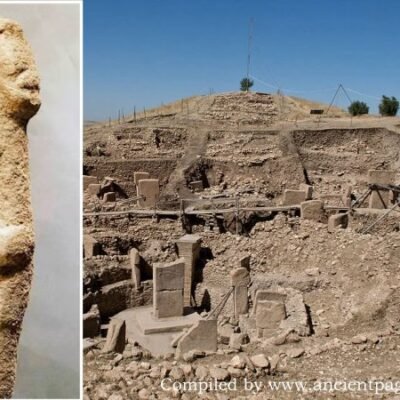Yves here. Many of you have read David Graeber’s Debt: The First 5000 Years. This article does not attempt to give such a broad look, but instead focuses on the period just before modern banking started getting its headway, as demands for credit increased due to the rise of the bourgeoisie and the increase in trade. Yet these informal arrangements served often to finance borrowing for emergencies and regular seasonal needs.
Perhaps I have a biased sample, but quite a few of the cases I know of people lending to help a relative or friend out have produced squabbles and even damaged the relationship. But the author stresses the shift from earlier informal and adaptive treatments of borrowing to the rigid terms in credit instruments, and the disadvantages they produce.
However, the author oddly does not acknowledge here (perhaps she does in her book) that this bespoke, highly personal lending does not scale. This was confirmed in the wake of the financial crisis, when default servicers, aka combat servicers, were set up to modify defaulted mortgage, which is a case-by-case activity. It was well recognized that that these companies becaem bad at their job when they got to be too large, which IIRC was over 400 employees.
By Elise Dermineur, Associate Professor of Economic History Stockholm University. Originally published at VoxEU

The global financial crisis of 2008 has led economists, historians, and policymakers alike to re-examine the foundations of our financial infrastructure. This column revisits the world of credit before the rise of modern banking to draw insights for contemporary reform. Drawing on historical research from early modern Europe, it reveals that communities long relied on deeply embedded, interpersonal credit systems grounded in trust, reciprocity, and flexibility. These informal networks, while imperfect, were often more adaptive and inclusive than current models. This historical perspective invites us to imagine credit systems that are more humane, responsive, and socially embedded.
The global financial crisis of 2008 raised profound questions about the resilience, fairness, and sustainability of modern banking systems. As millions lost their homes and livelihoods in the wake of financial collapse, the pitfalls of institutional finance became strikingly clear (Tooze 2018). This moment of rupture has led economists, historians, and policymakers alike to re-examine the foundations of our financial infrastructure. Among the more intriguing paths of inquiry is the question: what existed before banks? How did individuals and communities manage credit in the absence of formal financial institutions? And can these historical arrangements offer valuable lessons for today? In a new book, I attempt to answer these questions (Dermineur 2025).
The Ubiquity of Embedded Credit
Long before the emergence of modern banking, credit was a vital aspect of economic life. In early modern Europe, borrowing and lending occurred regularly, not just for investment or trade but also for survival. Households relied on credit to manage seasonal shortages, cope with emergencies, acquire land or livestock, and fulfil tax obligations. Importantly, most of the capital allocated was not provided by institutions but through interpersonal networks within local communities. These arrangements were characterised by strong social norms which enable monitoring and enforcement mechanisms.
Figure 1 Non-intermediated credit transactions in the seigneurie of Florimont, 1780-85
Note: Based on probate inventories of the seigneurie of Florimont, 1780-85. Nodes are colored according to the place of residence and weighted according to the out-degree. Non-intermediated transactions were credit exchanges agreed upon between private individuals without institutional intermediation.
Source: Dermineur (2025)
One of the most striking features of these pre-banking credit systems was thus their embeddedness in social relations. Financial transactions were not isolated events but part of ongoing relationships shaped by mutual expectations, reciprocity, and community norms. The ability to access credit often depended more on one’s standing within the community than on formal financial qualifications. A good reputation, a history of reciprocity, and shared kinship or neighbourly ties mattered very much. Such embededness forces us to ask if such credit markets were in fact markets at all.
Flexibility and Other-Regarding Norms
Loans were arranged with or without formal contracts. They were often, at first, verbal agreements or often only recorded informally, in household account books or on private notes. Terms varied widely depending on the needs and circumstances of the parties involved. Interest was often repaid in kind when cash was not available. Crucially, repayment schedules could be adjusted in response to changing conditions. If a borrower suffered a failed harvest or illness, lenders might extend deadlines or reduce obligations. This flexibility helped maintain social cohesion and reduced the likelihood of economic exclusion.
Such adaptability stands in stark contrast to the rigidity of many modern financial instruments. Contemporary credit systems are heavily formalised, with standardised contracts, only marginally negotiable interest rates, and strict enforcement mechanisms. While these features provide clarity and predictability, they can also produce inflexibility, especially during periods of economic distress. The foreclosure crisis of 2008 is a case in point, when millions of households were unable to renegotiate terms and were forced into default.
Historical research reveals that the transition from informal, socially embedded credit to formal, institutional finance was gradual. By the late 18th and early 19th centuries, the expansion of commercial and industrial activities, urbanisation, and state fiscal capacity contributed to the growth of banking institutions. This shift brought new efficiencies and scale to financial markets, but also marked a departure from the personal and relational aspects of earlier systems. As finance became more anonymous and standardised, it also became more extractive and less responsive to individual circumstances.
That does not mean premodern systems were ideal or free from inequality. Access to credit was still shaped by hierarchies of gender, class, and status. Wealthier individuals and households had greater capacity to lend and were more likely to have their debts honoured. Nonetheless, the presence of community-based lending practices created opportunities for financial inclusion that were often more accessible than institutional credit in the early phases of modern banking.
The World We Have Lost
The evolution of financial systems thus involved a trade-off: the efficiency and scale of formal institutions came at the cost of social embeddedness and flexibility. Revisiting premodern credit practices allows us to reflect on what was lost in that transition and what might be reclaimed. In particular, the principles of trust, reciprocity, and negotiated obligation suggest an alternative approach to credit that is more adaptive and potentially more equitable. As a case in point, premodern practices continue to persist in developing economies (Svetiev et al. 2022, Dermineur 2023).
In recent years, there has been a resurgence of interest in peer-to-peer lending and community finance. These initiatives, often facilitated by digital platforms, attempt to reintroduce elements of interpersonal trust and local accountability into financial transactions (Rodima-Taylor 2022). While they differ in many ways from historical practices, their attempt to mimic these practices often failed because precisely of the lack of embededness.
Moreover, the ongoing challenges of financial exclusion, household debt, and credit insecurity point to the limitations of ‘one size fits all’ solutions (Wherry et al. 2019). Low-income households, gig economy workers, and individuals with non-traditional income sources often struggle to access credit under existing models. Historical precedents remind us that credit systems can be designed to accommodate variability and respond to lived realities.
Looking Ahead
Policy discussions around financial reform frequently focus on regulation, transparency, and market stability. These are, of course, essential. But equally important is the normative question: what should financial systems aim to achieve? If the goal is to support economic resilience, social inclusion, and long-term well-being, then we may need to broaden our framework beyond institutional efficiency. Looking to the past, we see that financial arrangements can be embedded in ethics of care and community responsibility – not just contracts and risk management.
The premodern example also invites reflection on the moral dimensions of debt. Today, debt is often framed in transactional terms: a formal obligation that must be fulfilled regardless of context. In earlier societies, debt was understood more dynamically (Goodhart and Hudson 2018). It was an obligation, yes, but one situated within a web of social relations. Forgiveness, delay, and renegotiation were not signs of moral failure but of mutual recognition (Hudson and Goodhart 2018). This perspective can inform current debates on student debt, medical debt, and bankruptcy reform, where rigid enforcement often clashes with social realities.
Ultimately, the purpose of studying historical credit systems is not to romanticize the past or to propose a chimeric return to pre-banking models. Rather, it is to expand our imagination about what financial systems can be. By examining how societies managed credit without banks, we can imagine alternative principles and practices that can complement modern finance.
In sum, the history of credit before banks reveals a world where finance was deeply embedded into the fabric of everyday life. It functioned not just as an economic tool but as a social practice. As we confront ongoing challenges in contemporary finance – from inequality to instability – this historical perspective offers a valuable resource. It encourages us to ask not only how finance works, but for whom and to what end. A more inclusive, resilient, and humane financial system may well require us to learn from the past as we look to the future.
See original post for references





